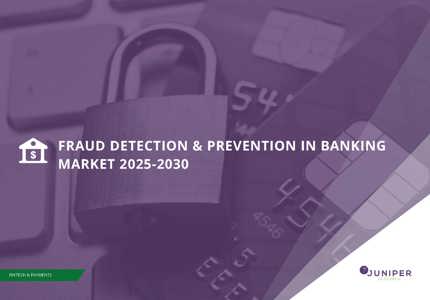From Monzo to Barclays: What’s Behind the Recent Wave of AML Failures?
Earlier this month, Monzo was hit with a £21 million fine for "systematic financial crime control failings." The penalty sent ripples across the fintech landscape; prompting heated debates around whether challenger banks, which often scale rapidly, are outgrowing their compliance capabilities.
However, just a week later, Barclays was fined a staggering £41 million for similar lapses; demonstrating that legacy institutions are also struggling to meet anti-money laundering (AML) standards.
The Financial Conduct Authority (FCA) stated that Barclays had “facilitated the movement of funds linked to financial crime” by misclassifying two high-risk clients -Stunt & Co, and WealthTek - as low-risk. Both clients were already under investigation for money laundering; raising serious questions about how they passed through Barclays’ due diligence net.
These fines are the largest the FCA has issued so far this year; underlining how seriously the regulator views these breaches. In fact, Barclays’ £41m penalty surpasses any AML-related fines issued in 2023 and 2024. Only Santander UK's £107 million fine in 2022 - which was also levied for deficient AML controls - stands out as a larger historic case in recent years.
But Barclays and Monzo are not alone. Other commercial banks in the UK have also faced scrutiny for similar lapses. In 2024, Metro Bank was fined £16.7 million after flaws in its transaction monitoring system left gaps in financial crime detection. The issue originated when Metro automated parts of its AML processes, only to discover that incorrect data inputs between 2016 and 2020 compromised the effectiveness of the entire system.
Starling Bank, another digital challenger, was fined £29 million after its automated screening tool failed to properly identify customers on sanctions lists. It turned out the system had only been checking against a subset of the official list of sanctioned individuals and entities.
Types of AML Processes

Source: Juniper Research
So, the question begs: why have banks old and new been failing to provide adequate AML checks?
Established banks are hampered by legacy systems; many of which are siloed and lack interoperability. Santander planned to upgrade its transaction monitoring system by integrating it with its Customer Risk Assessment (CRA) system. However, this was technologically complex and deemed unachievable; leaving Santander relying on temporary fixes and exposed to compliance risks.
In contrast, challenger banks are built on modern tech stacks and should, in theory, be more agile. Yet rapid deployment without sufficient oversight presents its own risks. Both Metro and Starling were fined after their automated systems failed. Metro’s Automated Transaction Monitoring System had operational deficiencies, while Starling’s sanctions screening system only checked a partial list. To avoid such issues, significant resources need to be invested into skilled human oversight during implementation.
Unfortunately, a shared challenge across both types of banks is under-resourcing in AML teams. The FCA found that Monzo’s monitoring tasks were handled by inexperienced staff, while Santander’s Suspicious Activity Reporting (SAR) unit faced a five-month backlog on medium-risk alerts due to staff shortages. Technology, no matter how advanced, cannot compensate for a lack of human oversight.
Whether hampered by legacy tech or hindered by rushed innovation, banks are repeatedly falling into the same traps. These cases reveal a common lesson: effective financial crime prevention is not just about having the right tools, it’s about how those tools are integrated, supported, and governed. Automation can significantly enhance transaction monitoring, but only when paired with experienced personnel and robust processes.
Lorien is a Research Analyst in the Fintech and Payments team at Juniper Research, and specialises in analysing and forecasting emerging trends and innovations in financial markets. Her latest reports have covered topics including Contactless Payments, Virtual Cards, and Network Tokenisation.
Latest research, whitepapers & press releases
-
 ReportDecember 2025
ReportDecember 2025AI Agents for Customer Experience Platforms Market: 2025-2030
Our comprehensive AI Agents for Customer Experience Platforms research suite comprises detailed assessment of a market that is set to disrupt mobile communications. It provides stakeholders with insight into the key opportunities within the AI agents for customer experience platforms market over the next two years.
VIEW -
 ReportDecember 2025Fintech & Payments
ReportDecember 2025Fintech & PaymentseCommerce Fraud Prevention Market: 2025-2030
Our eCommerce Fraud Prevention research suite provides a detailed and insightful analysis of this evolving market; enabling stakeholders from financial institutions, law enforcement agencies, regulatory bodies and technology vendors to understand future growth, key trends, and the competitive environment.
VIEW -
 ReportNovember 2025Telecoms & Connectivity
ReportNovember 2025Telecoms & ConnectivityeSIMs & iSIMs Market: 2025-2030
Juniper Research’s eSIMs and iSIMs research suite offers insightful analysis of a market set to experience significant growth in the next five years. The research suite provides mobile network operators (MNOs), original equipment manufacturers (OEMs), and eSIM management and platforms vendors with intelligence on how to capitalise on the market growth, and guidance on how eSIM-only devices and sensors, SGP.42, in-factory provisioning, and iSIMs will change the competitive landscape.
VIEW -
 ReportNovember 2025Fintech & Payments
ReportNovember 2025Fintech & PaymentsModern Card Issuing Platforms Market: 2025-2030
Our Modern Card Issuing Platforms Market research suite provides a detailed and insightful analysis of this evolving market; enabling stakeholders from banks, financial institutions, fintech companies, and technology vendors to understand future growth, key trends, and the competitive environment.
VIEW -
 ReportNovember 2025Fintech & Payments
ReportNovember 2025Fintech & PaymentsDigital Wallets Market: 2025-2030
Our digital wallets research suite provides detailed analysis of this rapidly changing market; allowing digital wallet providers to gain an understanding of key payment trends and challenges, potential growth opportunities, and the competitive environment.
VIEW -
 ReportOctober 2025Fintech & Payments
ReportOctober 2025Fintech & PaymentsDigital Identity Market: 2025-2030
Juniper Research’s Digital Identity research suite provides a comprehensive and insightful analysis of this market; enabling stakeholders, including digital identity platform providers, digital identity verification providers, government agencies, banks, and many others, to understand future growth, key trends, and the competitive environment.
VIEW
-
 WhitepaperDecember 2025Telecoms & Connectivity
WhitepaperDecember 2025Telecoms & ConnectivityHuman + AI: Drivers of Customer Experience AI Agents in 2026
Our complimentary whitepaper, Human + AI: Drivers of Customer Experience AI Agents in 2026, examines the key drivers of the AI agents for customer experience platforms market in 2025.
VIEW -
 WhitepaperDecember 2025Fintech & Payments
WhitepaperDecember 2025Fintech & PaymentsBeyond Chargebacks: The True Cost of Fraud for Digital Commerce
Our complimentary whitepaper, Beyond Chargebacks: The True Cost of Fraud for Digital Commerce, examines the state of the eCommerce fraud prevention market; considering the impact of evolving digital fraud strategies, including key trends such as identity theft, account takeovers, chargebacks, policy abuse and friendly fraud.
VIEW -
 WhitepaperNovember 2025Telecoms & Connectivity
WhitepaperNovember 2025Telecoms & ConnectivityeSIM-only Devices: The Impact on Operators, Consumers, and IoT
Our complimentary whitepaper, eSIM-only Devices: The Impact on Operators, Consumers, and IoT, explores the challenges and opportunities for the three segments, with a particular focus on eSIM-only smartphones and SGP.42.
VIEW -
 WhitepaperNovember 2025Fintech & Payments
WhitepaperNovember 2025Fintech & PaymentsUnlocking the Next Stage of Growth for Modern Card Issuing Platforms
This free whitepaper analyses key trends shaping the modern card issuing space, and the ways in which modern card issuing platforms can capture growth.
VIEW -
 WhitepaperNovember 2025Fintech & Payments
WhitepaperNovember 2025Fintech & PaymentsTop 10 Fintech & Payments Trends 2026
Fintech is evolving fast. From stablecoins to agentic AI, our annual guide reveals the shifts redefining payments, digital identity, and the future of money in 2026. Download your copy today.
VIEW -
 WhitepaperNovember 2025Fintech & Payments
WhitepaperNovember 2025Fintech & PaymentsDigital Wallets: Empowering Financial Inclusivity
Our complimentary whitepaper, Digital Wallets: Empowering Financial Inclusivity, examines the state of the digital wallets market; considering the impact of digital wallets on different geographies, how they are shaping the modern payments landscape through lower transaction fees and promoting financial inclusivity for underbanked populations, and how they are competing with established payment methods.
VIEW
-
IoT & Emerging Technology
Juniper Research Unveils Top 10 Emerging Tech Trends to Watch in 2026
January 2026 -
Fintech & Payments
Digital Identity App Usage to Hit 6.2 Billion by 2030, Driven by Shift to Decentralised Models
December 2025 -
Telecoms & Connectivity
Travel eSIM Margins Under Pressure as Revenue per Gigabyte Falls 10% Globally in Two Years
December 2025 -
Telecoms & Connectivity
AI Agents to Power 1,000% More Customer Interactions for Enterprises Globally by 2027
December 2025 -
IoT & Emerging Technology
Global D2C Revenue Set for $370 Million Surge, But Satellite Operators Should Not Chase Full MNO Status
December 2025 -
Fintech & Payments
Digital Goods Fraud to Cost eCommerce Merchants $27 Billion Globally by 2030 as AI Tools Accelerate Attacks
December 2025

























